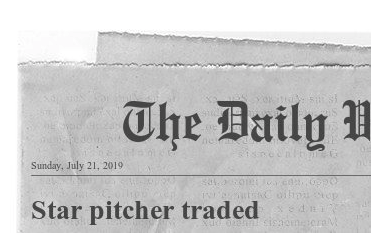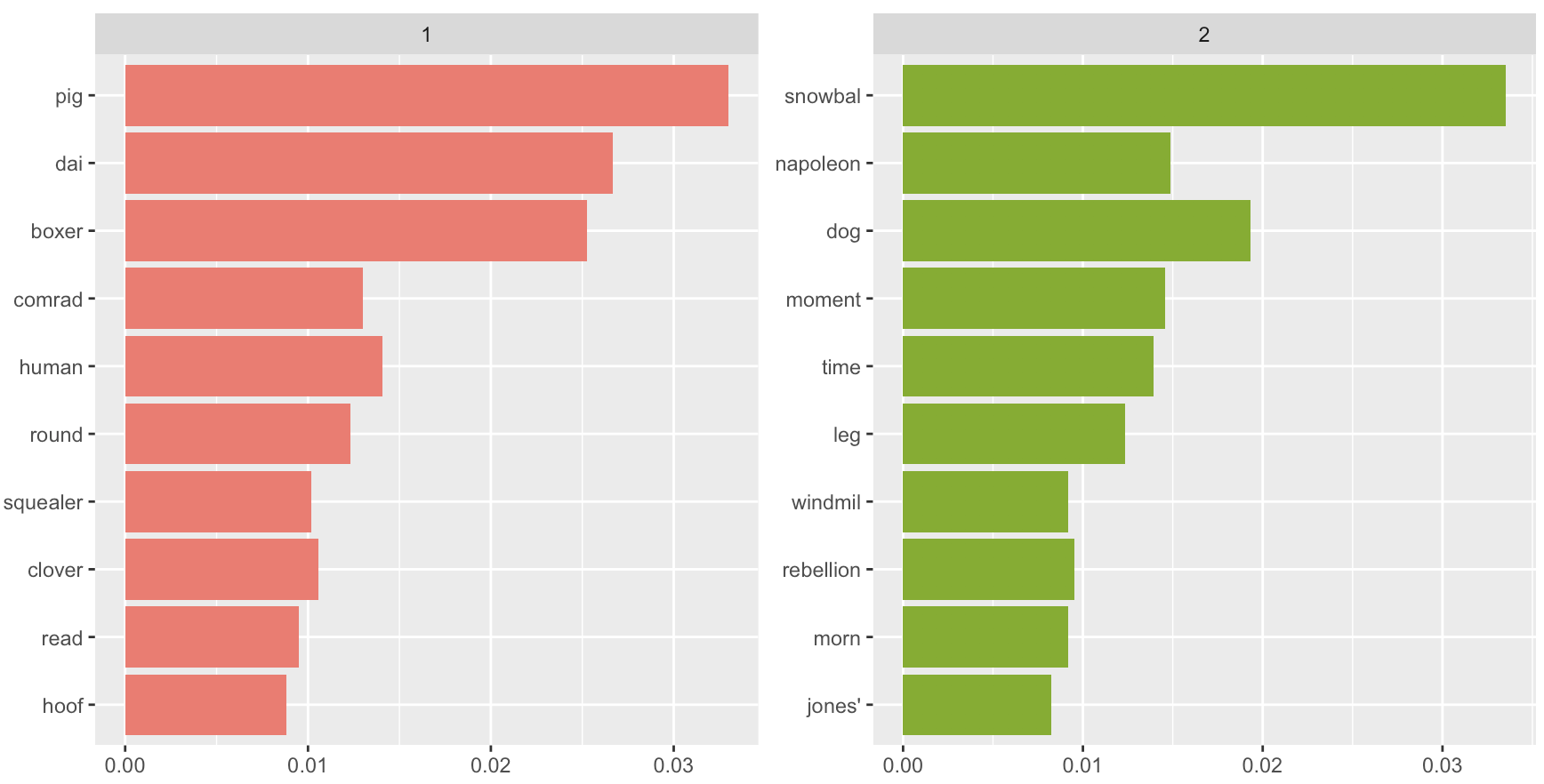Introduction to topic modeling
Introduction to Natural Language Processing in R

Kasey Jones
Research Data Scientist
Topic modeling
Sports Stories:
- scores
- player gossip
- team news
- etc.
Weather in Zambia:
- ?
- ?
Latent dirichlet allocation
- Documents are mixtures of topics
- Team news 70%
- Player Gossip 30%
- Topics are mixtures of words
- Team News: trade, pitcher, move, new
- Player Gossip: angry, change, money

1 https://en.wikipedia.org/wiki/Latent_Dirichlet_allocation
Preparing for LDA
Standing preparation:
animal_farm_tokens <- animal_farm %>%
unnest_tokens(output = "word", token = "words", input = text_column) %>%
anti_join(stop_words) %>%
mutate(word = wordStem(word))
Document-term matrix:
animal_farm_matrix <- animal_farm_tokens %>%
count(chapter, word) %>%
cast_dtm(document = chapter, term = word,
value = n, weighting = tm::weightTf)
LDA
library(topicmodels)
animal_farm_lda <- LDA(train, k = 4, method = 'Gibbs',
control = list(seed = 1111))
animal_farm_lda
A LDA_Gibbs topic model with 4 topics.
LDA results
animal_farm_betas <-
tidy(animal_farm_lda, matrix = "beta")
animal_farm_betas
# A tibble: 11,004 x 3
topic term beta
<int> <chr> <dbl>
...
5 1 abolish 0.0000360
6 2 abolish 0.00129
7 3 abolish 0.000355
8 4 abolish 0.0000381
...
sum(animal_farm_betas$beta)
[1] 4
Top words per topic
animal_farm_betas %>%
group_by(topic) %>%
slice_max(beta, n = 10) %>%
arrange(topic, -beta) %>%
filter(topic == 1)
topic term beta
<int> <chr> <dbl>
1 1 napoleon 0.0339
2 1 anim 0.0317
3 1 windmil 0.0144
4 1 squealer 0.0119
...
animal_farm_betas %>%
group_by(topic) %>%
slice_max(beta, n = 10) %>%
arrange(topic, -beta) %>%
filter(topic == 2)
topic term beta
<int> <chr> <dbl>
...
3 2 anim 0.0189
...
6 2 napoleon 0.0148
...
Top words continued

1 https://www.tidytextmining.com/topicmodeling.html
Labeling documents as topics
animal_farm_chapters <- tidy(animal_farm_lda, matrix = "gamma")
animal_farm_chapters %>%
filter(document == 'Chapter 1')
# A tibble: 4 x 3
document topic gamma
<chr> <int> <dbl>
1 Chapter 1 1 0.157
2 Chapter 1 2 0.136
3 Chapter 1 3 0.623
4 Chapter 1 4 0.0838
LDA practice!
Introduction to Natural Language Processing in R

